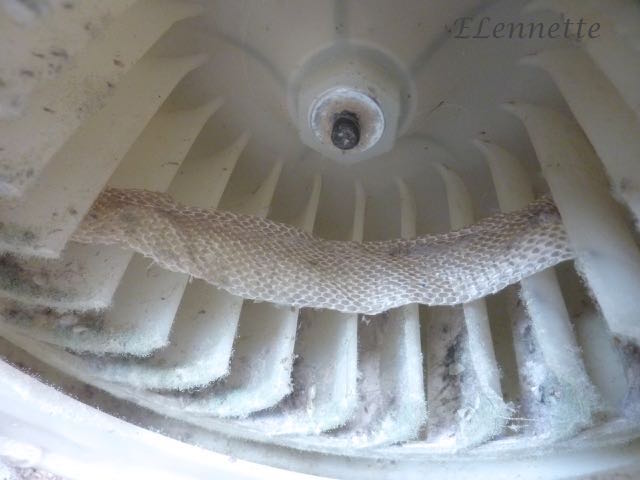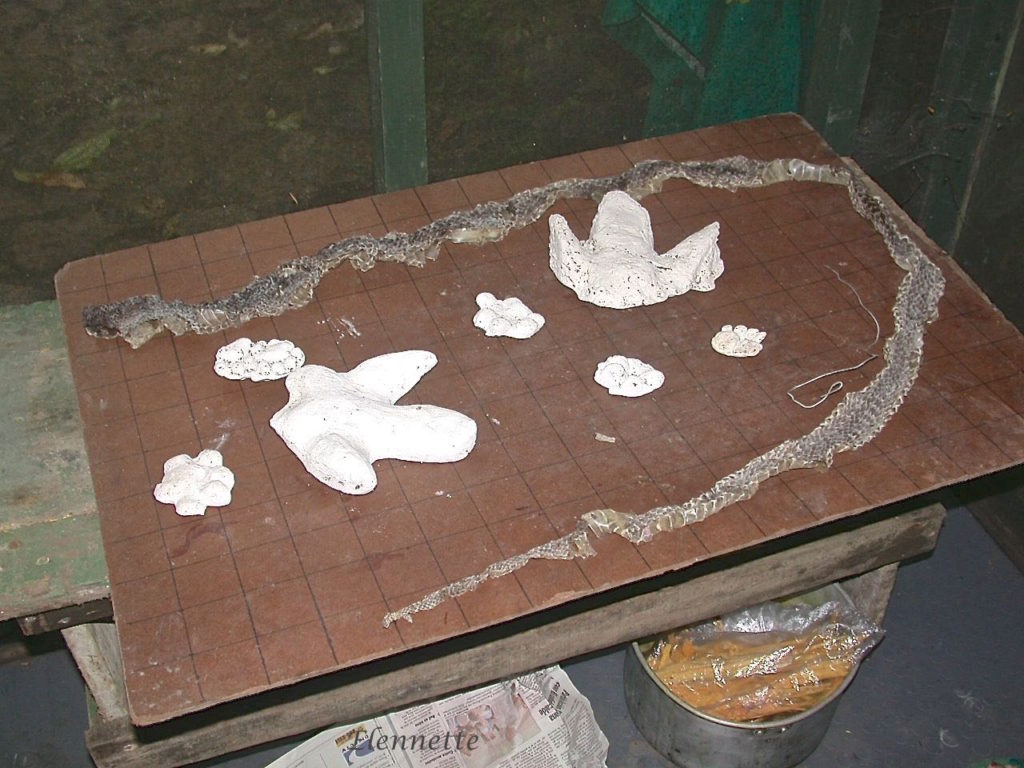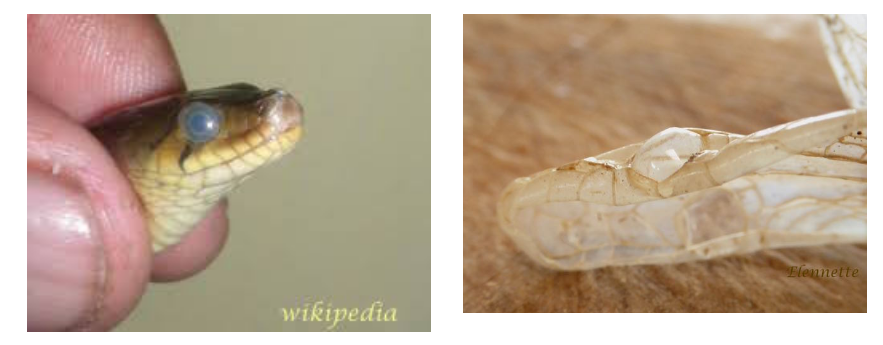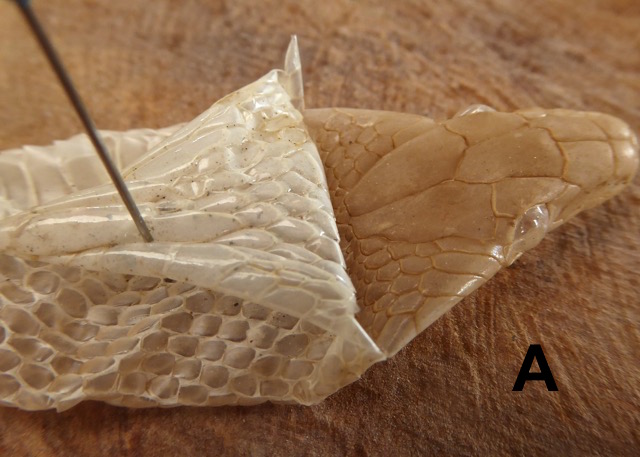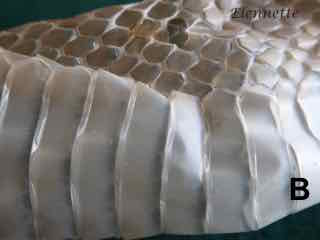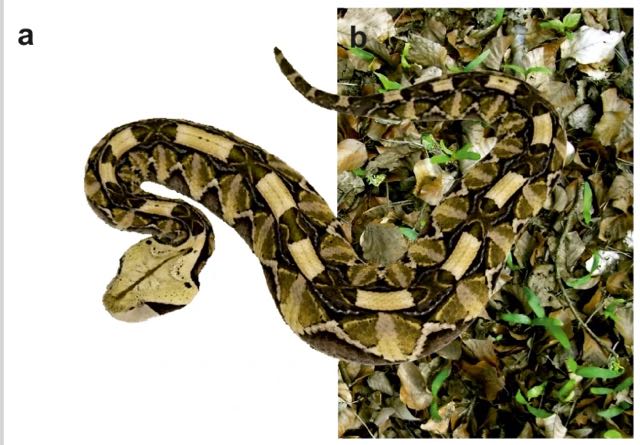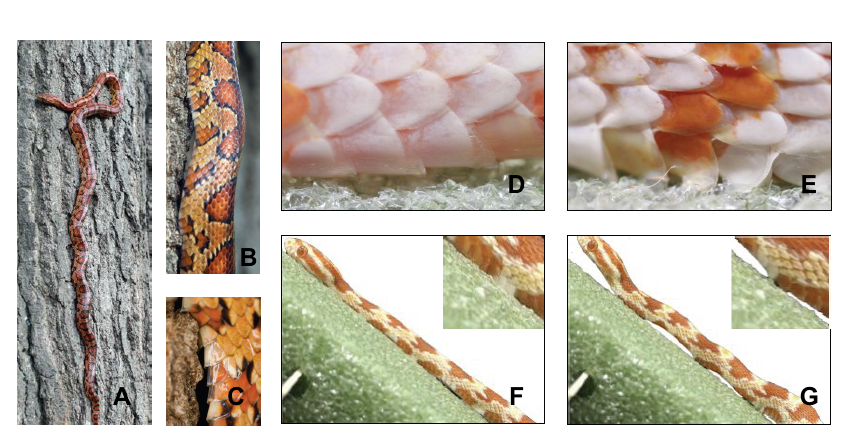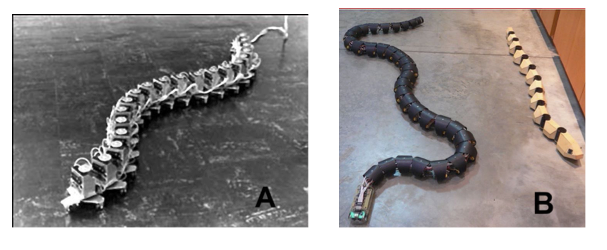Slither and Scales
Nectandra Reserve’s location is well known among the local old timers as a garden of Eden — and just as snake infested. This reputation was especially well heeded by parents. Children were warned off and even forbidden from entering the place in the pre-Nectandra era. Several of these children are now among our garden staff.
As you may have read from my last blog, the snake skin pictured was found wrapped around the clothes dryer in our Costa Rican home. It necessitated a most inconvenient and unusual session of lint removal. That experience, coupled with the numerous snake sightings at the Nectandra Reserve, triggered a series of musings. In turn, they led me to an unexpected wealth of fascinating research information.
Given the number of snakes at Nectandra, finding abandoned skins is a common occurrence. Fast growing young snakes molt several times a year, while older snakes do it annually. The skins are found hanging off tree branches or on the ground. The photo below, of a longer than 2m (~6.5 ft ) venomous pit viper (Fer-de-lance or Bothrops asper), was collected by our staff and spread on the measuring board marked off with 5 cm (2in.) squares. On the same surface were also negative plaster-of-Paris casts of Baird’s tapir footprints and of two different, very large cats, later identified as a puma and a jaguar.
Snake skins are also disconcertingly common around my home near the reserve. Yet, they almost always induce my heart to skip a beat. I encounter them in the most unexpected places, such as on the handle of my propane tank, the fan of the clothes dryer, between the planks of lumber in my shop or in the middle of the garden gravel path. At first glance, these places shared no apparent common attributes. Aren’t snake supposed to be extra shy when they are molting? Another perplexing observation was that skins, if found intact, were completely turned inside out. This suggested that the snakes didn’t just shed their skins willy-nilly, but “crawled” out the narrow tube (through the mouth). The old skin and the new skin must also be attached at the tail until the inversion is complete. Intrigued, I searched for web videos of snakes in the process of molting. For a peep show of one caught doing the striptease, please click on the following link:
https://www.youtube.com/watch?v=YQDhlGjHQNI
In other words, the snake needs a location with precise geometry and texture, a place where it can squeeze through easily but tight/rough enough to retain the old skin, such as branching tree forks, or if not available, a handle of a propane tank, a clothes dryer fan, a gravelly surface, or any suitable location at hand — ergo, the listlessness before molting trying to find a perfect spot. Incidentally, in the absence of suitable “shedding” structures, pet snakes can develop health problems associated with incomplete or imperfect shedding.
What happens during molting?
I described in my blog “Out of Its Skin” some of the reasons why certain organisms need to molt — mainly to make room for growing and elongating, for renewal of a protective skin subjected to continuous friction and to shed potential parasites.
A couple of weeks before shedding, snakes become restless, hide and stop eating. The old skin loses its luster. The eye shield (a transparent scale) clouds up (left photo) with a blueish tinge. This eye cap, known as the brille, is joined to the rest of the skin. The photo on the right shows the brille of a snake after ecdysis (molting) at Nectandra.
In their growing phase, the outer old skin and the inner new skin are contiguous. Unlike human skin, where one individual aging cell sloughs off at a time, snake epidermal cells form a single interconnected sheet, to be shed all at once. For shedding, the highly keratinized (analogous to our nails) old skin needs to separate from the more delicate inner layer. Just before separation, white blood cells (think pus) invade a temporary zone between the two layers, releasing enzymes to digest the adhering tissues to facilitate molting.
The Old Skin
Snake (live or dead) skin is dry to the touch, moderately flexible and scaly. Plainly, the scales are not like those of fishes. They cannot be scraped off as they are folds in the integument and are an integral part of the skin. Depending on the body location, the scales are of different size and shapes (photos A & B. ). The precise distribution and shapes of the scales are used to identify snakes.
A. Inside out snake skin molt. Dorsal head skin to the right of fold. Ventral head scales to the left. B. Dorsal scales (upper) above banded ventral scales (lower).
Scales
“Wait a second”, you may say, “but snakes are not colorless! Where are the snake patterns?”. Missing in the dead skin are the scale pigments that give the snake’s impressive coloration and camouflage. The pigmentation of the scales is critical, not just for appearance, but for the snake’s survival. The photos below show an example of the astounding ability of the W. African Gabon viper to disappear from view in their ecological niche. Snake pigments, composed of melanin, ranging from yellow to dark brown to black, are designed both for camouflage and temperature control. The darker the color, the better to absorb surrounding heat.
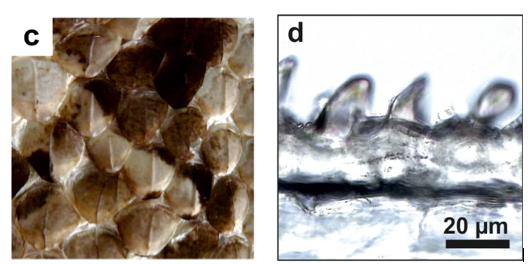
a. West Africa Gabon viper (Bitis rhinoceros) without background, b. on leafy substrate. c. Dorsal scale , d. Light microscopy of dorsal scale cross sections. Adapted from M Spinner et al. 2013, Scientific Reports.
While the dorsal scales determine the snakes appearance and radiation absorption, the ventral scales take most of the beating being always in contact with solid substrates. The keratinized scales not only are tough, but shaped to maximize gripping power when necessary and minimized friction for efficiency. In fact, ventral snake scales are not passive structures. They can be actively oriented to resist downward sliding, e.g. when climbing or going downhill (see photos below).
(A) A corn snake ascending a tree. (B-C) Scales are used to grip tree bark asperities. Snake scales at their (D) minimum and (E) maximum angles of attack. (F-G) A snake climbing an inclined surface. Sliding is prevented by emergency braking associated with lifting of the body. Adapted from PhD thesis of Hamidreza Marvi, 2013. Georgia Institute of Technology.
Now, we come to a key structure that enables the snakes’ undulating locomotion: its skeleton, which consists of the skull, vertebrae and ribs. Snake upper and lower jaws are not fused together. There is no sternum. Snakes have between 130-500 vertebrae. While each vertebra have limited freedom of rotation, there are enough of them to collectively allow for the snakes’s overall flexibility. Each of the hundreds of vertebrae is attached to a rib. The other end of the ribs, without a sternum, are attached to muscles and skin. Together with their unfused jaws, expandable rib cage and skin, snakes can swallow and ingest preys many times their own size — whole.
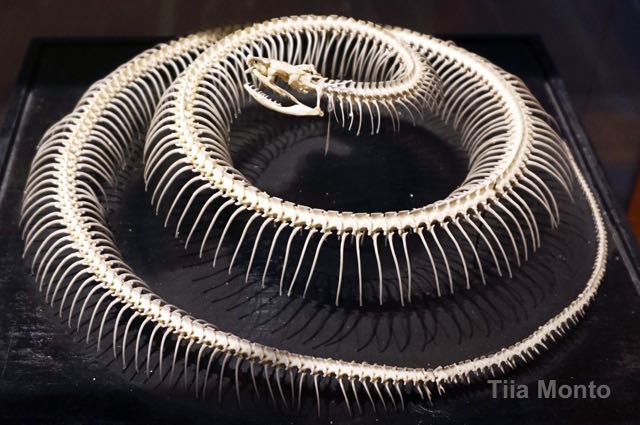
A snake skeleton in National Museum of Natural Sciences of Spain
Locomotion
In a moment of fantastic reflection, I imagine living in an exceedingly long, limbless body, straightjacketed by a shapeless tube. I ponder what it would take for me to slither, climb, swim or even glide in the air (as in the flying snakes ) — all the while constrained inside a body that is ~20 times longer than my girth. Snakes may have lost their limbs during evolution, but they certainly have made up the loss in astounding ways — feats beyond my human comprehension.
Moving snakes are hypnotic to watch. The serpentine locomotion is smooth, silent, fluid, swift yet unhurried (even when pursued). Let’s view a video clip of a coral snake (~2.0m) moving across a freshly dug construction site at Nectandra. Note the fast rhythmic undulation of the body, known technically as concertina movement. In the concertina mode, the body forms S-shaped undulation horizontally, but also coupled to shallow, vertical folding and unfolding movements using anchored contact points with the substrate to propel forward. In the video below, the entire length of the body appears to “flow” over the rough terrain without any apparent effort. The unhesitating, liquid-like movement belied the unevenness of the substrate, even on the steep incline. (I could attest to the terrain roughness because I did not do well on the same path). Imagine the frictional demands on the skin.
Coral snake, approximately 2.0 m long, slithering across construction site at Nectandra. Videographer Arturo Jarquin.
Not surprisingly, the versatility of snakes’ locomotion has engineers in awe and in eager pursuit to understand the forms and functions of the snake structure and skin. They are especially curious about the skin’s counteraction to unrelenting friction, as well as other anatomical features that allow the high degree of articulation. The engineers’ curiosity is not simply academic, but to inspire designs for industrial search-and-rescue robotics, surgical applications and even space exploration. Snakes, as it turn out, are among the most efficient, flexible and versatile locomotors, requiring the least space over a wide ranging substrates. Many of their cleverly designed robotic cousins hope to emulate the ability to squeeze through inaccessible crevices, building rubble, pipe lines, collapsed tunnels and mine, human blood vessels or organs etc.
In trying to tease out the details of snakes locomotion, engineers have been building snake robots since 1972, to investigate and emulate the constituent components that influence the snake articulation and locomotion. There have been innumerable designs for snakebots, many with wheels, rollers, even legs. Some are powered by electricity, others propelled by pressured air and fluids etc. The experimenters learned rapidly that the effortless slithering, climbing, swimming of biological snakes belie the enormous complexity in their dynamic movements, body structures and surface components. The following photos are just a small sampling of robots among many.
A. Earliest robot, ACM iii, 1972. Shigeo Hirose of Tokyo Institute of Technology B. Robo-snakes, photo by Steve Jurvetson, 2005.
C. Robot Uncle Sam 2010, Carnegie Mellon University. D. Ladder climbing robot 2008. Tatsuya Takemori, Tokyo University & University of Electro-Communications
The robots photos in A, B are examples of snakebots (or robosnakes) that can slither on a smooth, flat surface but not climb. Robots in photos C and D can move, climb but not slither. There are innumerable others emulating the snake with varying degree of success, but all imperfectly compared to their biological versions.
I am including two very informative (and entertaining) videos of examples of man’s ingenuity. The first is Snakebot Engadget, a newer generation of Uncle Sam (robot C above), with impressive abilities already used in disasters search-and-rescue missions.
https://www.youtubecom/watch?v=oat582SaTko
The second video (equally worthwhile) is of a large series of snake robots demonstrated at the 2021 Expo held at the Tokyo Institute of Technology, to sample the wide ranging ideas that have been tried.
https://www.expo21xx.com/automation21xx/18224_st3_university/default.htm
